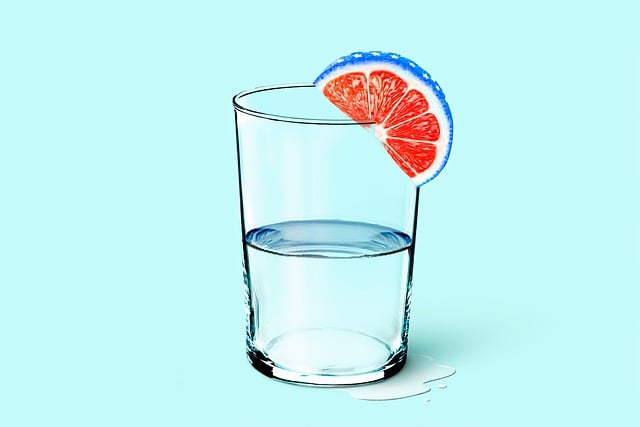Cold water immersion (CWI), or cryotherapy, is a popular recovery method for athletes, reducing muscle soreness and inflammation by submerging in water below 50°F. Combining CWI with compression garments enhances microcirculation, accelerating waste removal and oxygen-rich blood flow to sore tissues, leading to faster recovery times and improved performance. This synergistic approach, known for its benefits in post-exercise recovery, strategically uses cold water immediately after exercise and compression during and afterward for optimal results.
Discover the power of combining cold therapy with compression for enhanced athletic recovery. This synergistic approach leverages the benefits of both techniques, including reduced inflammation, muscle soreness, and improved blood flow. By diving into the science behind cold water immersion and compression, we’ll explore how these methods can be used together to optimize post-exercise performance and accelerate recovery times. Uncover best practices and future insights tailored for athletes seeking a competitive edge.
Understanding Cold Water Immersion for Recovery
Cold water immersion, often referred to as cold therapy or cryotherapy, is a powerful tool for accelerating physical recovery. It involves submerging oneself in cold water, usually ice-cold or near-freezing temperatures, for a specific period. This method has gained popularity among athletes and fitness enthusiasts due to its ability to reduce muscle soreness, inflammation, and swelling. When the body is exposed to extreme cold, it triggers a series of physiological responses that include vasoconstriction (narrowing of blood vessels) and reduced blood flow to extremities, which helps minimize damage and swelling in overworked or injured muscles.
For effective recovery, cold water immersion should be combined with compression techniques. Compression garments or bandages can be used to further restrict blood flow, prolonging the body’s natural anti-inflammatory response. This dual approach of cold therapy and compression enhances microcirculation, promoting the removal of metabolic waste products and delivering oxygen-rich blood to sore or damaged tissues. As a result, athletes often report faster recovery times, reduced muscle stiffness, and improved overall performance after incorporating these methods into their post-workout routines.
The Role of Compression in Enhancing Post-Exercise Recovery
Cold water immersion has long been recognized as a valuable tool for post-exercise recovery, but combining it with compression takes this process to another level. Compression garments or bandages are designed to mimic the effects of a tight fit, promoting blood flow back towards the heart from the extremities. This enhanced circulatory process helps accelerate the removal of metabolic waste products and lactic acid that build up during intense exercise. By improving circulation, compression can reduce muscle soreness, stiffness, and fatigue, all of which contribute to faster recovery times.
When used in conjunction with cold water immersion, compression further optimizes recovery. Cold therapy restricts blood vessels, temporarily reducing inflammation and inhibiting the release of pro-inflammatory cytokines, substances that play a role in pain and swelling. As a result, athletes often experience diminished discomfort and faster tissue repair following intense workouts or competitive events. This combination approach offers a holistic strategy for enhanced post-exercise recovery, ensuring athletes can return to their training routines more swiftly and effectively.
Combining Cold Therapy and Compression: A Synergistic Approach
Combining cold therapy and compression is a synergistic approach that enhances recovery, offering a powerful one-two punch for athletes and active individuals. Cold water immersion for recovery, a popular technique among sports professionals, leverages the benefits of both methods. By immersing oneself in cold water, such as an ice bath or cold pool, the body experiences a rapid reduction in muscle inflammation and pain. This is due to the cold temperature constricting blood vessels, reducing blood flow to damaged areas, and minimizing metabolic waste products that contribute to soreness.
Compression garments, when worn during or immediately after exercise, work in tandem with cold therapy by promoting better blood circulation. As the cold water immerses tired muscles, compression garments help to squeeze and support the legs, arms, and core, improving lymphatic drainage. This synergy accelerates the removal of metabolic waste and facilitates the delivery of oxygen-rich blood to sore muscles, enabling faster recovery and preparing the body for the next intense training session.
Benefits, Best Practices, and Future Insights on Combined Therapy for Athletes
Cold water immersion and compression therapy have gained significant attention in the athletic community as powerful tools to accelerate recovery and enhance performance. The benefits are multifaceted, offering reduced inflammation, decreased muscle soreness, and improved circulation, all of which contribute to athletes’ overall well-being. By combining these two techniques, athletes can experience more rapid recovery after intense training sessions or competitions, enabling them to return to their peak form faster.
Best practices for this combined therapy involve strategically timing the immersion and compression. Cold water baths or ice pools are most effective when used immediately post-exercise, as it helps flush out metabolic waste products and reduces muscle stiffness. Compression garments should be worn during and after the cold exposure to enhance blood flow back towards the heart while also providing additional support to working muscles. Future insights suggest personalized approaches, considering factors like exercise intensity, duration, and individual recovery preferences. Additionally, incorporating these therapies into established rehabilitation protocols could offer promising results for athletes seeking to optimize their recovery processes.
Combining cold water immersion and compression therapy emerges as a powerful synergistic approach for enhanced athletic recovery. By harnessing the benefits of both methods, athletes can accelerate muscle soreness relief, reduce inflammation, and improve overall performance. As research continues to evolve, a deeper understanding of optimal application techniques and dosages will empower athletes and sports professionals alike to make informed decisions regarding their recovery strategies. Cold water immersion for recovery, when integrated into comprehensive post-exercise routines, holds significant promise in revolutionizing athletic performance and well-being.
